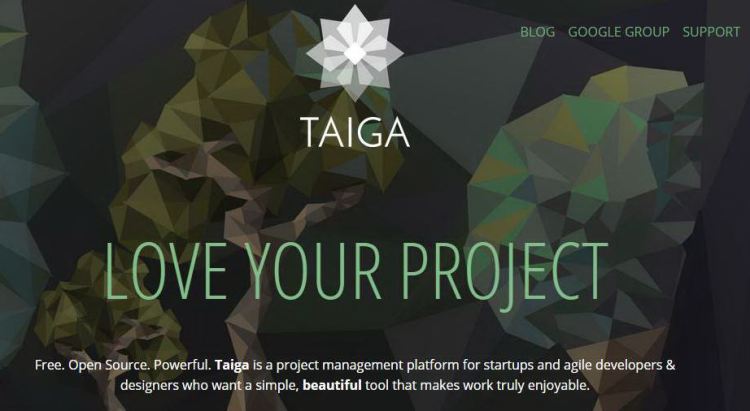
This is my first attempt to connect the two interests of my life – open source software & start ups. Would love to know your views & counter views.
Imagine you are an aspiring entrepreneur, you have an awesome idea, and a great plan to execute – what would be your greatest fear? Let me guess, “what if users don’t like the product, what if I fail against competition, what if I don’t make lots of money”. One solution to this, is positioning your product properly in the market, everything else follows.
I will take the example of Taiga – an open source project management tool, and try to explain how they managed to get 18000+ users in just 3 months of existence, that too without spending a single penny on marketing.
Even if you have an awesome product, getting the initial traction is very important. It is only after reaching a critical mass that you can expect strategies like word of mouth to work. Lets analyze various factors that helped Taiga:
-
Initial traction: Even before they launched, Taiga created a positive anticipation among users, making sure the excitement was high at the time of launch. Finally when they launched, they were ranked first on hacker news. This was partly due to the great product they had and partly because of enthusiasm already built around the product. Key take away: Hustle as much you can, even before your product is launched. Anticipation of your product will surely set you on the path of initial traction.
-
Positioning the product well: There are several project management tools available currently, and many of them are open source / free to use. So, the first question any prospective user will have – why a new project management tool? Taiga answered this question on their homepage, clearing any ambiguity the users may have. They highlighted the problems in current tools, clearly indicated the pain points and then described how would they solve it. Key take away: It is very important that user/customer understands your product easily. They should know the problems your product aims to solve. Only then they have a solid reason to try your product.
-
Open source: Taiga is open source – as you know, this means you can download the source code, customize it as per your needs, use it on your servers, all without paying a cent to anyone. This may seem silly to some, why would someone work hard on a product and then give it for free? But, the real thought behind it is – free as in freedom, not freebie. So, being open source actually helps Taiga get improved over the time as more and more people who adopt Taiga will contribute to it in some or the other way. Also, since there is no upfront charge to get started, there is no financial barrier for people to try Taiga. Key take away: Getting started with the product should be as easy as possible, the more hurdles – whether financial or technical, the more unlikely it is that people will try the product.
Photo credit taiga.io. Get in touch https://twitter.com/tiwari_nitish





Rishi
Hi Nitish! Are you part of Taiga or are you just using it as an example? You keep referring to as Taiga or “they”.
asha chaudhry
rishi :)))))))))))))))) that’s the first q i asked nitish!
nitish – perhaps you should put a disclaimer at the end 🙂
Nitish Tiwari
Hi Rishi, I know them because of my interest in open source tech. But I am not related to them in any way. 🙂
Nitish Tiwari
That’s true. Hope the comment serves as a disclaimer. 🙂
I will ask them to feature Taiga in showcase too. That will make things clearer I guess.
Rishi
got it! thanks!
Shwaytaj Raste
Nitish, Looks like a really good tool. We need agile PM tools and open source works well for startups. Have you actually used it yourself?
Nitish Tiwari
Hi Shwaytaj..Yes we used it for a small dev project at technocube. It is a nice tool – has a refreshing new UI and focuses on usability. I couldn’t actually believe such a tool is available for free (open source)
Project issues, wiki, team meetings etc are very well integrated with other agile related features like user stories, sprint tracking etc.
You can create an account and take a look at the UI at their website, doesn’t take much time.
Jaseem Thayal Shareef
Great post! Would like to know more details about the traction channels, the tactics used for maintaining the zero marketing budget. And also, out of 18K users, how much are active users?
Alok Rodinhood Kejriwal
I like the 3rd point – keeping friction low
We have noticed the same in games. The lesser the funnel drop, the better the VIRALITY…
funny co-relation, but it exists..
Nitish Tiwari
Being a software product, their first channel was HackerRank, later they also used content marketing – an article I wrote for them on opensource.com got a lot of attention.
There are websites that cover open source tools, and Taiga being a nicely designed open source tool got a lot of attention their as well. About the active users, I am not really aware of the current status, but the last time I spoke to them they were just 2 months old so did not have a clear definition of (in)active users.
Nitish Tiwari
Hi Alok, great to have your attention!
The correlation you mention is true, there are several open source tools I covered for opensource.com and this trend is visible for most of them. If the tool is difficult to install / register, people generally skip it and continue using what they did earlier – even if the new tool has some better features.
Jaseem Thayal Shareef
Oh, okay! By the way, well written article on opensource.com 🙂
Nitish Tiwari
Thanks! 🙂